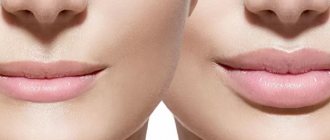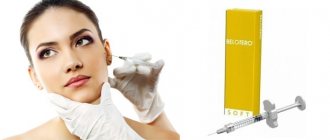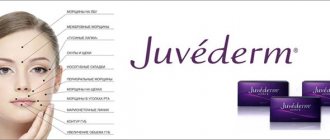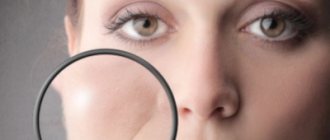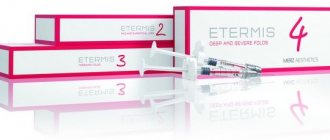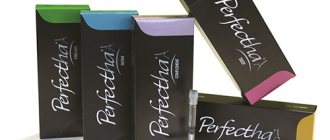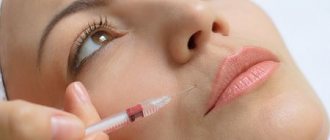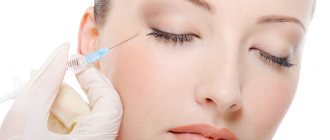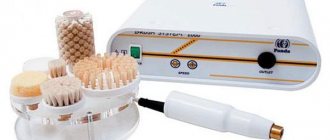FAQ
Q: What is better – contour plastic surgery or full-fledged plastic surgery?
A: Contour plastic surgery is a delicate, soft and atraumatic method of facial correction that can give an effect close to that of plastic surgery. It is not entirely correct to compare these methods. Their main difference is the duration of preservation of the result. Of course, in the case of invasive intervention it is much higher. Otherwise, the results of contour plastic surgery sometimes please patients even more than the results of plastic surgery.
Q: At what age is contour plastic surgery acceptable?
A: Corrective (modeling) contour plastic surgery is performed from adulthood. Anti-aging contour plastic surgery is recommended for patients of a mature age category (40-65 years). Until the age of 35-40, it is better to resort to preventive procedures - biorevitalization, mesotherapy, plasma lifting, etc.
Q: Is natural facial expression preserved after contouring?
A: Contour plastic surgery, in principle, does not involve the introduction of neurotoxins that relax facial muscles and stop the conduction of nerve impulses to muscle fibers.
Therefore, facial expressions are preserved in full. With the artisanal and negligent work of a cosmetologist, the effect of a swollen “pillow face” is possible, but in order to avoid such a phenomenon, it is enough to be reasonable in choosing a specialist and not skimp on your own health.
What types of fillers are there?
Questions like: “Which fillers are best for lips?”, “Which fillers are used under the eyes?” “Which fillers are the best and safest?” – one of the “hottest” on cosmetology forums. And this is understandable - everyone wants to look natural after contouring and not have health problems.
Since many aesthetic problems are solved through injection plastic surgery (smoothing small wrinkles and filling deep wrinkles, correcting age-related changes, modeling the face), fillers differ in composition and density, depending on their purpose. Their validity period also varies.
Let's look at the existing types of fillers:
Non-biodegradable fillers (synthetic fillers) are the “first-born” in the line of these cosmetic products, focused primarily on filling wrinkles. Inexpensive, made from silicones, as well as paraffin or polyacrylamide gels, they do not oxidize, do not decompose, and are not excreted from the body, which ensures their long-term effect. However, the significant side effects of these fillers (movement and clumping, severe allergic reactions, etc.) prevent them from being competitive today.
Biosynthetic fillers are the next generation. They are created on the basis of collagen and synthetic components that are well compatible with the human body (polycaprolactone, calcium hydroxyapatite, etc.). Such preparations provide a natural and at the same time very long-lasting rejuvenation result, filling the volumes well where it is needed and stimulating the production of one’s own collagen. The risk of allergic reactions is reduced, however, over time, some problems associated with the slow resorption of the gel are possible, for example, swelling, blockage of blood vessels.
Biodegradable fillers are hyaluronic-based fillers that, at the end of their effect, break down into simple components and are easily removed from the body. Since hyaluronic acid is also found in human tissues, such drugs interact well with the body and do not cause rejection reactions. Hyaluronic fillers help improve intracellular activity and launch rejuvenation processes, moisturize the skin, activate oxygen supply and metabolic processes, and produce new collagen and elastin fibers. The face after contouring looks fresh and natural. Minus: the duration of the effect is relatively short.
Autofillers are in a separate category. The material for filling wrinkles in this case is the patient’s own fat (lipofillers) or collagen or fibroblasts produced (grown) from pre-taken tissues. Such fillers are highly compatible with the body and provide an obvious rejuvenation effect by stimulating the production of your own hyaluronic acid, elastin and collagen. Cons: high cost of fillers, short duration.
Important! In order for the effect of contouring to be pleasing, injectable fillers must be selected by a cosmetologist, taking into account the wishes of the patient and the condition of his tissues!
Indications for facial contouring
Contour plastic surgery is performed when there are obvious signs of chronoaging of facial tissues:
- “Floating” oval of the face in the temporal, zygomatic and chin areas;
- Gravitational ptosis of the skin along the contour of the lower jaw;
- Age-related “jowls”;
- Double chin;
- Nasolabial and labiomental folds;
- Nasolacrimal grooves (“dips” in the malar zone, creating the visual effect of swelling of the lower eyelid);
- Deep wrinkles of surprise and anger on the forehead and bridge of the nose;
- Depletion of subcutaneous fat in the eyelids and cheeks.
The procedure is also used for:
- Creating or recreating seductive fullness of lips;
- Contouring the red border and lifting the corners of the mouth;
- Cheek lifts;
- Straightening the back of the nose with a hump or pits (no more than 3-5 mm in height or depth);
- Chin augmentation;
- Correction of the shape of the ears and earlobes;
- Neutralization of facial asymmetry and disproportions.
Before the procedure
Before the procedure, it is recommended to reduce facial expressions (if they are highly developed) using botulinum therapy. This allows you to see the depth of wrinkles and folds and reduce the amount of filler injected to avoid uneven distribution. It is recommended to refrain from taking anticoagulants (blood thinning drugs) and anti-inflammatory drugs a week before contouring. Try to avoid tanning beds or prolonged exposure to the sun. You should not drink alcohol 48 hours before the procedure. You should not engage in physical activity for 24 hours.
Preparations for contouring
Facial contouring involves the injection of special dermal (skin) implants with a gel-like consistency. All fillers differ in the concentration of the active substance, density and viscosity. The densest dermal implants are suitable for facial volumization and complex procedures such as non-surgical rhinoplasty. Fillers with a lighter structure are designed to fill skin creases, grooves and folds.
Modern fillers are divided into three categories according to the key component:
- Fillers based on hyaluronic acid are the most popular option, providing a harmonious and attractive correction result. Used both in youth and in adulthood. In addition to volumization, it provides deep and intense hydration of the skin at the dermal and epidermal level. This helps prolong the results of contouring by awakening the potentials of the skin;
- Fillers based on calcium hydroxyapatite have become increasingly popular in recent years. Like hyaluronic acid, calcium hydroxyapatite is constantly present in the human body, being part of bone tissue. Initially, fillers of this category were used to restore the volume of soft tissues in patients with AIDS. Having demonstrated excellent results in such complex cases, dermal implants have been introduced into aesthetic medicine. With their help, it is possible to model a clear and beautiful oval face. In addition, they have a lasting biological lifting effect, stimulating neocollagenesis;
- Polycaprolactone fillers are relatively new but well-researched dermal implants. They are based on a substance that has been used for a long time in general surgery as an absorbable suture material. A remarkable feature of the drugs lies in the record long preservation of the results of contour plastic surgery - up to 4 years. Currently, manufacturers are working on creating fillers that will retain their properties for 5-6 years.
Natural consequences
Some phenomena accompany almost any type of plastic surgery. First of all, this is the appearance of bruises and swelling in the operated area. The fact is that almost all plastic surgery involves tissue injury. Bruising and swelling are a natural reaction of the body to intervention. It is impossible to avoid their appearance, but you can speed up tissue healing and restoration of the body.
At first, there may also be a slight increase in body temperature, pain, and exudate from the wounds. If these phenomena are mild and do not cause much discomfort, medical intervention is not required. If necessary, painkillers and other medications can be prescribed to reduce general discomfort during the recovery period.
All medications must be prescribed by a doctor; self-medication is prohibited.
Choosing a filler for contouring
Fillers for contouring are selected by a cosmetologist during an in-person consultation, after a thorough diagnosis of the current skin condition, identification of specific problems, assessment of the patient’s wishes and expectations regarding the result of the procedure.
In modern practice, only high-quality and safe drugs from the world's leading manufacturers are used. The most popular of them are the Juvederm, Surgiderm, Restylane, Glytone and Princess families, as well as Radiesse and Ellanse. All dermal implants undergo multi-stage cleansing and are subsequently subjected to comprehensive independent research and testing.
The choice of drug depends on five factors:
- Type of aging (fine wrinkles, deformation or combined);
- The degree of age-related changes;
- The complexity of tasks related to modeling facial features;
- Patient's age;
- State of health (for example, fillers based on polycaprolactone are recommended for polyvalent allergy sufferers, since they do not contain animal and bacterial impurities).
In this case, the cosmetologist selects the drug according to three parameters:
- Key Ingredient;
- Concentration of the active substance and technology for cross-linking molecular bonds;
- Density and cohesiveness (viscosity).
Based on the collected data, the cosmetologist determines the most suitable filler in each individual case.
Protocol for contouring
Almost all fillers for facial contouring contain an anesthetic (lidocaine), which makes the procedure as comfortable as possible. If the patient wishes, the cosmetologist can provide additional application or injection (conduction) anesthesia.
Facial contouring is a simple and quick procedure, but for its high-quality execution, high professionalism and extensive experience of the cosmetologist are important. It is carried out according to the following algorithm:
- Control consultation and marking (optional);
- Pain relief (if provided);
- Opening the package with the drug and syringe/microcannula (done strictly in the presence of the patient);
- Carrying out a series of injections using a linear or fan-retrograde technique;
- Manual massaging of the treated areas for uniform distribution of the gel.
Rehabilitation after contouring involves avoiding thermal influences (baths, saunas, solariums, facial steaming) for 10-14 days. In the first 5-6 days, swelling, hyperemia and hematomas may persist. These side effects are temporary and are considered normal. They do not require treatment and go away on their own.
After contouring, the cosmetologist will give you recommendations regarding subsequent care.
In some cases, the procedure is “split” into several stages (visits) in order to avoid overcorrection.
Rehabilitation. Rules for skin care after injection of hyaluronic acid
Hyaluronic acid injections for the face are safe. And that’s all, they make adjustments to the natural functioning of the body. Therefore, after the procedure, it is important to remember the skin care rules and follow them during the first two weeks.
What not to do after the procedure
On the first day it is prohibited:
- Massage and scratch the skin. After the procedure, small nodules may appear at the injection sites; they resolve on their own within the first three days.
- Drink alcohol. Alcohol contains ethanol, which dilates blood vessels and increases blood circulation. Drinking alcohol after the procedure leads to severe swelling on the face, which must be removed in a hospital setting.
For two weeks it is prohibited:
- Sunbathe (in the sun and in the solarium). Ultraviolet rays disrupt the natural distribution of the drug in skin tissues.
- Exercise. Active exercise increases blood flow, which increases the rate at which the drug is eliminated from the body.
- Cool or overheat. It is not recommended to take long baths or go to the sauna, as this disrupts the natural healing process of tissues.
What to do after the procedure
- Treat wounds 2-3 days after the procedure. A cosmetologist will advise you on lotion and other care products.
- Apply wound healing ointments to the injection sites.
- Perform a special massage yourself, recommended by a cosmetologist.
- Watch your diet and drink plenty of water. Alcohol, fried foods, excess salt and sugar, lack of water - negatively affect the condition of the skin.
All necessary recommendations for preparing for contouring and skin care after the procedure will be provided by a cosmetologist.
Make an appointment by phone. Consultation with a cosmetologist is free.
To make an appointment for a consultation, call the administrators of the MC “Beauty Industry - XXI Century” +7 (8634) 60-20-20.
Contraindications to contour plastic surgery
- Chronic systemic and organic diseases in the acute stage;
- Decompensated endocrine pathologies;
- Fever;
- Viral dermatological diseases in the area of intended exposure (for example, herpes on the lip in the active phase);
- Malignant tumors;
- Coagulation disorders (hemophilia, thrombophilia, etc.);
- Pregnancy;
- Lactation;
- The presence of permanent implants in the area of intended impact (biopolymer gels, silicone implants).
Duration of saving the result
The result of contouring appears instantly and is stable for 6-9 months. The duration of preservation of the result in each specific case depends on the chosen filler, conscientious adherence to recommendations and restrictions during the recovery process, individual characteristics of the body (metabolic rate, etc.).
Telephone consultation is always free!
Leave your contact, we will tell you everything and offer a discount!
Send

